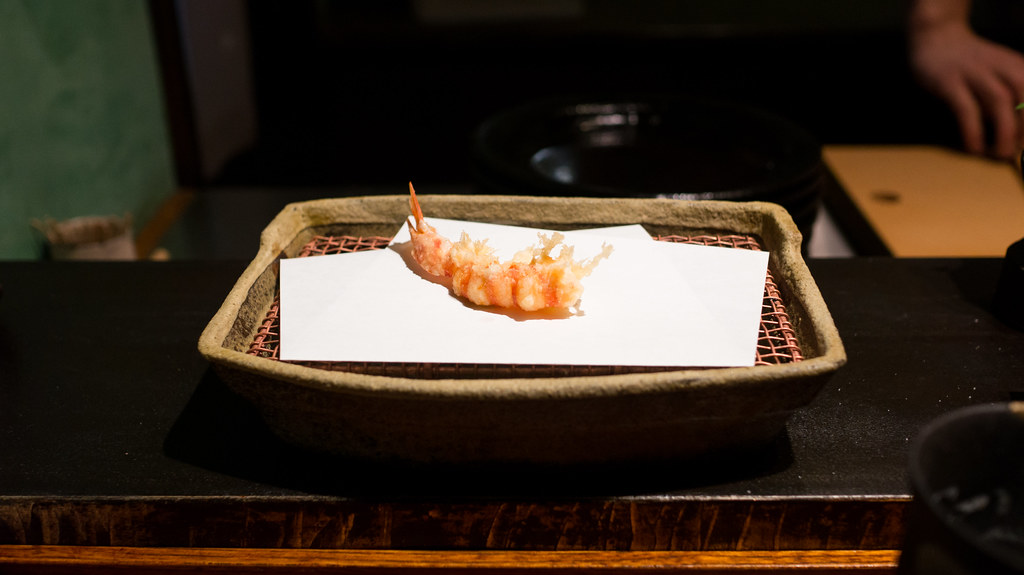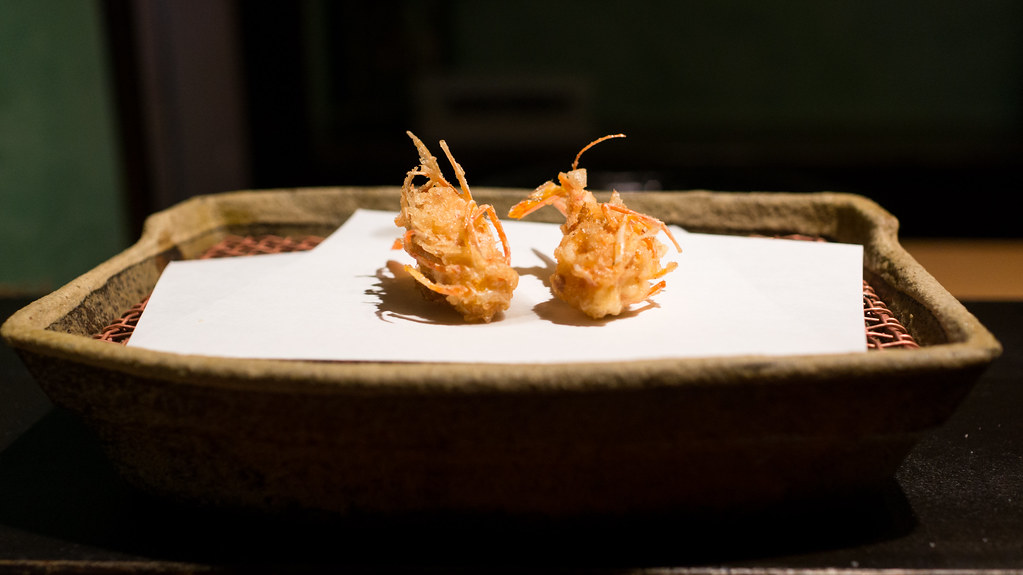 We ate our share of sushi while in Japan, but sushi is not the be all and end all of Japanese cuisine. While planning our trip, several smart people told us we needed to, among other things, fit in at least one tempura meal while we were there. And just a couple weeks before we left, the New York Times ran a piece on one of Tokyo's high-end tempura temples, noting that such places are virtually nonexistent in the U.S.
We ate our share of sushi while in Japan, but sushi is not the be all and end all of Japanese cuisine. While planning our trip, several smart people told us we needed to, among other things, fit in at least one tempura meal while we were there. And just a couple weeks before we left, the New York Times ran a piece on one of Tokyo's high-end tempura temples, noting that such places are virtually nonexistent in the U.S.It's not that you can't find tempura in the States; indeed, many Japanese restaurants here try to do a little bit of everything, folding tempura, sushi, yakitori, ramen, soba and stir-fries all into the same menu.[1] But Japan is a place where specialists thrive. And at several restaurants in Japan, the art of tempura frying is treated with the same reverence and respect as we typically see only devoted to sushi. To experience it, we opted for Mikawa Zezankyo, a small place in a quiet neighborhood fairly close by the beautiful Kiyosumi Garden.
(You can see all my pictures in this Mikawa Zezankyo flickr set.)
Mikawa Zezankyo is in some ways a faithfully traditional place: you remove your shoes before being seated in one of the nine spots that surround the counter, and the menu – with ink-brushed calligraphy and illustrations – largely consists of the same kinds of "Edomae-tempura" items that would have been served a hundred years ago. But it is also quirkily individualistic: the chef apparently has a penchant for fedoras, which appear in various guises throughout the restaurant, including the massive brass exhaust fan over the cooking area.
The restaurant appears to be a three-person operation: Chef Tetsuya Saotome tends to the actual frying, as an assistant readies each course, and a server circulates behind the guests pouring drinks, clearing plates, and periodically swapping out the paper on which each item is deposited after it emerges from the bubbling oil. The first of these - all served one by one in an omakase style procession – is a plump ebi (shrimp), whose thin sheen of crispy batter only barely obscures its bright orange stripes. The chef recommends dipping in nothing but salt for this first bite, and he's right: its flavor is pure, clean and sweet, its texture still tender and supple once the delicate tempura casing is breached.
A second one follows, so you can also try the shrimp with the light, translucent soy and dashi dipping sauce bolstered with grated daikon oroshi. I had always been puzzled by the custom of serving tempura with a watery dipping sauce. Why go through all the trouble of creating this crispy exterior if you're going to just dunk it and make it all soggy? But here, anyway, the tempura coating still maintained some of its crunch even after being run through the dipping sauce, providing a further contrast of textures. Next, my favorite part, the shrimp's heads, crispy bites bursting with oceanic goodness.
(continued ...)



